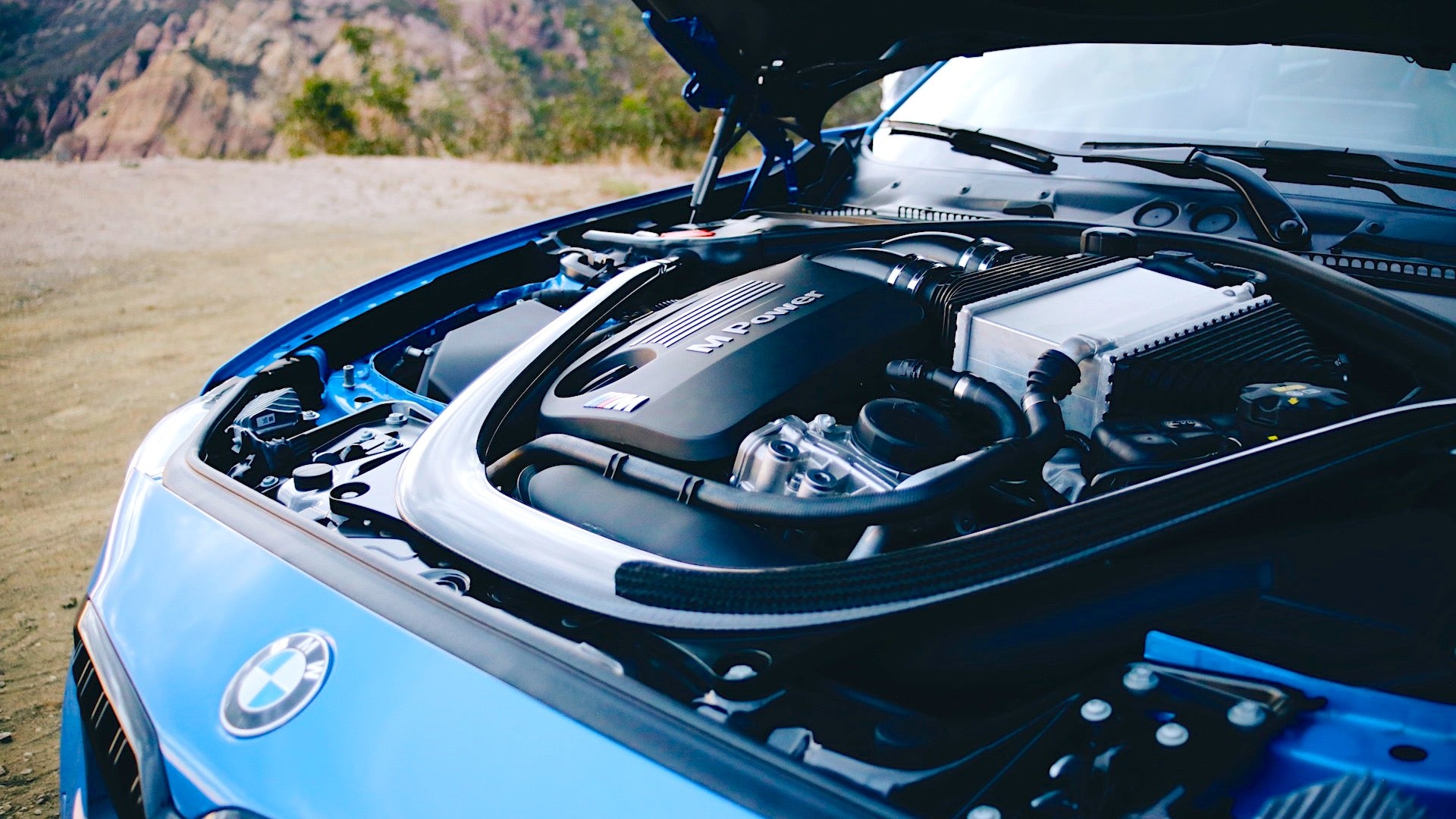Excess heat is the enemy when it comes to internal combustion engines. Operating temperature is ideal, but any degree above that starts to slowly sap power, put fluids to the test, increase friction, and decrease efficiency.
Heat is also the enemy of intake charge, as the cooler the air is entering the engine's intake manifold, and then onto each combustion chamber, the denser it will be. Denser (meaning more oxygen-rich) air improves combustion, which means more horsepower. Turbocharging compresses air and boosts horsepower and torque when matched with more fuel. It also increases the engine's volumetric efficiency.
However, compressing the air heats it up, as does the nearby heat from the exhaust side of the turbo. This means that the air isn't as dense as it could be, and therefore the engine doesn't produce as much power as it could. This is where an intercooler comes into play.
What is an intercooler and how does it work? Let’s discuss.
What Is an Intercooler?
An intercooler's purpose is a joyfully simple cooling component. The most common type, an air-to-air intercooler, does this by acting like a radiator as cool outside air passes through it cooling the inner air before it's sent to the combustion chamber.
Intercoolers come in all shapes and sizes to accommodate the size of the engine and turbo and/or supercharger (they can work in unison), as well as how much room there is to work with underneath your car’s hood. Their location is usually below the front bumper, in front of the car's radiator, but behind a grille. It can also be atop the engine, as is found on some Subarus.
The intercooler's location in a turbocharged or supercharged system is downstream from the forced induction component to cool compressed, heated-up air back down, which then makes it denser and therefore more oxygen-rich before it mixes with fuel and is burned.
What Are the Two Types of Intercoolers?
There are two types of intercoolers: air-to-air and air-to-water.
An air-to-air (ATA) design works by using the ambient air passing through the front of the car and onto the intercooler to cool the inner compressed air.
An air-to-water (ATW) intercooler uses cool water to cool the intake charge. This is a tad more complex as coolant flows through the intercooler to cool the air, which itself is pumped through a radiator at the front of the vehicle. These are useful when there are space concerns, with recent examples being the latest G8X BMW M3 and M4, which have several radiators, oil coolers, and transmission coolers where a big air-to-air intercooler would be, therefore air-to-water is a better option.
What Are Each’s Positives and Negatives?
An ATA intercooler is typically cheaper, lighter, and less complex than an ATW intercooler, as well as easier to integrate. Increasing the height of a radiator is usually a way to improve its cooling ability, however, it's not always doable if space is at a premium.
An ATW intercooler is typically more efficient as the route that the air must travel is much shorter, as each type experiences a pressure loss that depends on how far the air must travel post-turbo or supercharger, the shorter the better. An ATW's efficiency is bolstered by the fact that water conducts heat better than air. However, it is a more complex, expensive, and heavier system.
Are Intercoolers Prone to Damage?
An ATA intercooler is subject to the same forces of nature that can damage a radiator. Rocks and road debris can puncture them, thus creating a boost leak and cutting (or completely eliminating) the amount of air being forced into the engine. Ensuring the quality and health of the piping is essential, too. Rubber connectors can break and loosen, components can rub on piping and create holes, as well as other damage that results in boost leaks.
ATW intercoolers are less prone to damage, however, if punctured or hoses fail, this can cut flow and therefore render them useless. They can also spill their contents all over the engine bay.
A turbocharger suffering from an oil leak—meaning its seals let oil into its cool side (where the air is compressed)—clogs up passages in either type, cuts efficiency, and also causes potential long-term issues.
More From The Autance
- Chris Rosales took a spin in the 2023 Polestar 2 BST
- Lewin Day highlights why this C8 Chevy Corvette is one rare bird
- Add this really cool car-tractor creation to your collection
- Amazon's already-expensive, house-brand oil is on sale
- Caleb Jacobs shares why this Bring A Trailer parody Twitter account highlights some painful truths









